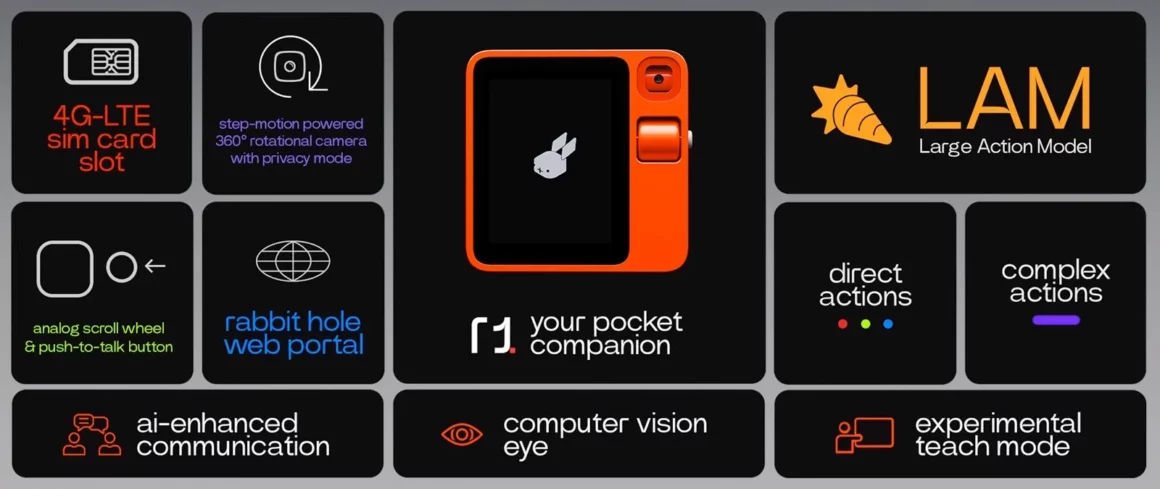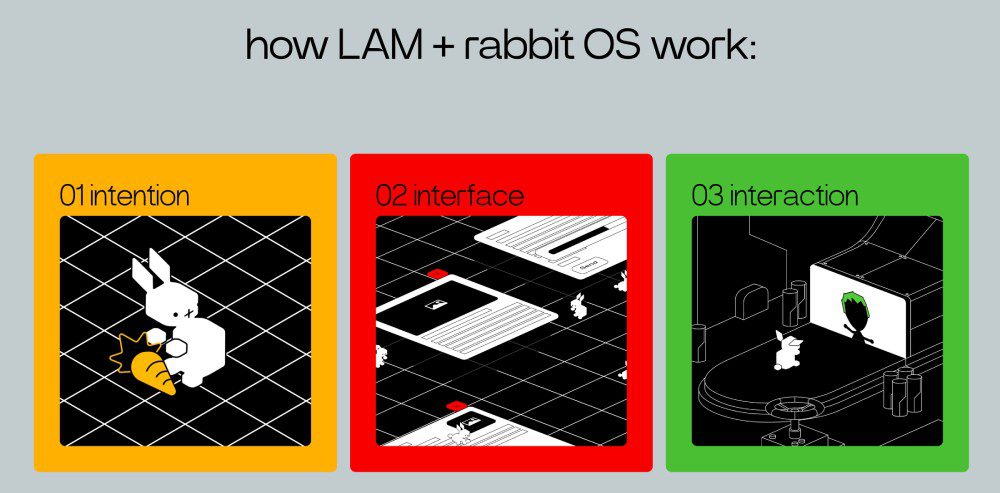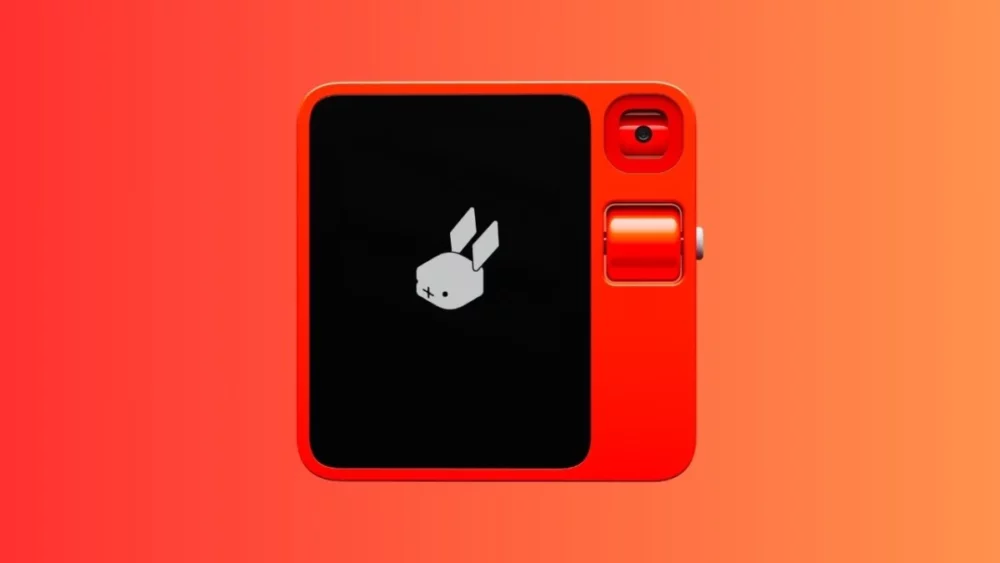Typically, I reserve my writing for specific topics, such as Product Design Leadership, Product Strategy, and Design Management, however, today marks an exception as I want to delve into a particular product that – as a Product Design Expert and Tech Enthusiast – I believe has the real potential to revolutionise the stagnant market of the mobile devices.
This product is the Rabbit R1, a device that defies the current conventions of the smartphone-saturated mobile market. You might wonder why, and the answer is really simple as this product signals a departure from the incremental innovations we’ve grown accustomed to, introducing what many tech experts consider a landmark in the evolution of mobile devices.
Understanding Rabbit R1

Let’s start from what this device is not, shall we? Because the Rabbit R1 is not another contender in the crowded smartphone arena. What this device represents instead is a paradigm shift, offering a unique blend of AI-first design and user-centric functionalities which diverge from the smartphone experience and logic.
With its eye-catching orange exterior and innovative product design by those absolute geniuses and masterminds of Teenage Engineering, the R1 appeals not only to design enthusiasts, but also to those seeking a fresh and more personal approach to technology.
Yes, because unlike traditional devices, the Rabbit R1 emphasises AI-first operations, setting a new standard for what we can expect from our future tech gadgets after 17 years from the launch of the first Apple iPhone.
What Makes Rabbit R1 Unique

At first glance, the Rabbit R1 might seem like an audacious venture, especially with its unconventional branding (Yes, their brand name sound like a quirky name for a tech brand, but in a world where we didn’t blink at the name “Apple,” why not a Rabbit?). Yet, its essence lies in the seamless integration of AI assistant capabilities with the versatile and common functions used also in our most favourite smartphones.
Whether it’s playing music, navigating directions, or accessing information (think ChatGPT), the R1 enhances everyday tasks with a layer of intelligent interaction. This isn’t about replacing your smartphone but rather augmenting the user experience with smarter, quicker and much more intuitive interactions.
Rabbit & LAM: A New Approach to AI Models

One of Rabbit R1’s distinguishing features is its reliance on a less known AI technology called Large Action Models (LAMs), a strategic pivot from using OpenAI ChatGPT or Google Gemini, the Large Language Models (LLMs) that are currently dominating the AI and tech landscape.
LAMs signify a shift towards AI models that understand the request and act, rather than generating something from scratch, reducing the reliance on heavy server-side processing and so, reducing energy consumption. This shift not only addresses the inefficiencies of LLMs but also redefines how devices can serve us more effectively, making the R1 a pioneer in action-oriented AI assistance.
Rabbit R1’s approach to Conversational UI

As a Product Design Enthusiast, while I was watching the presentation of the device from Rabbit’s Founder Jesse Lyu, I couldn’t help but notice how the Rabbit R1 excels in intelligently utilising a Conversational UI (User Interface), which stands as a testament to the advancements in Human-Computer Interaction (HCI).
This device challenges the traditional modes of interaction of smartphones and similar devices, favouring natural language processing to facilitate a more intuitive dialogue between the user and the device. By simplifying the interface and integrating just one single sided button in a walkie-talkie style, Rabbit R1 removes multiple interactions barriers, allowing for a more accessible and engaging user experience.
A Glimpse Into the Future
Rabbit R1 is not just another tech product; it’s a forerunner of innovation in a market crying out for genuine change. It challenges us to think differently about what our devices can do and how we interact with them.
The introduction of LAM-based technology and a uniquely crafted conversational UI bring us into a new era of device interaction, emphasizing efficiency, intuitiveness, and a closer alignment with human behaviour.
As a Product Design Leader, I’m excited by the possibilities the Rabbit R1 opens up for the evolution of UX Design and the future of technology. As we look into the future, this device is a testament to the potential combination of Product Design, AI, and User Interaction to transform the digital world as we know it.
I hope you enjoyed this reading and if so, please leave a comment sharing your thoughts in the comments section below, or by sharing this in your favourite social media channel!



